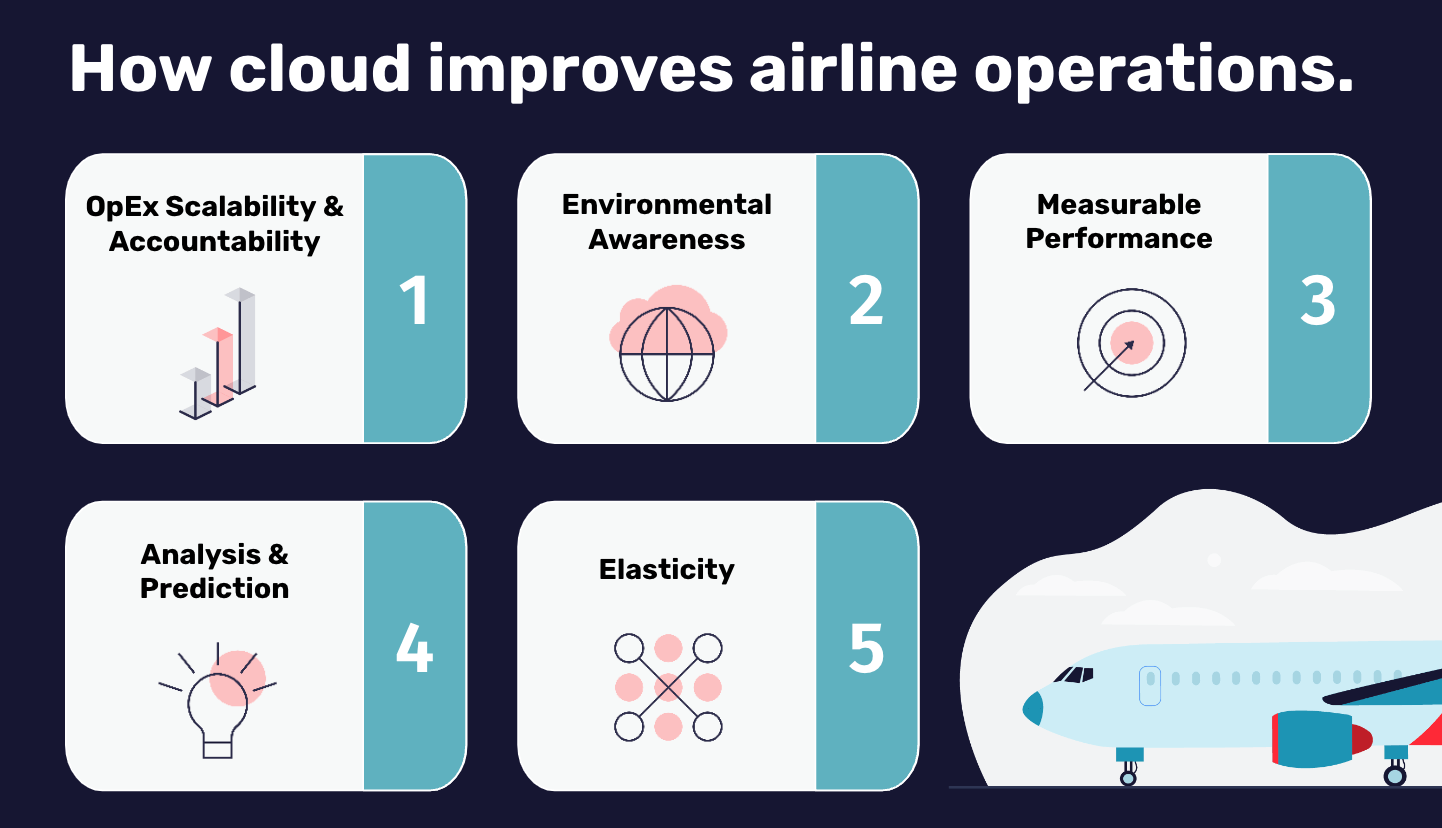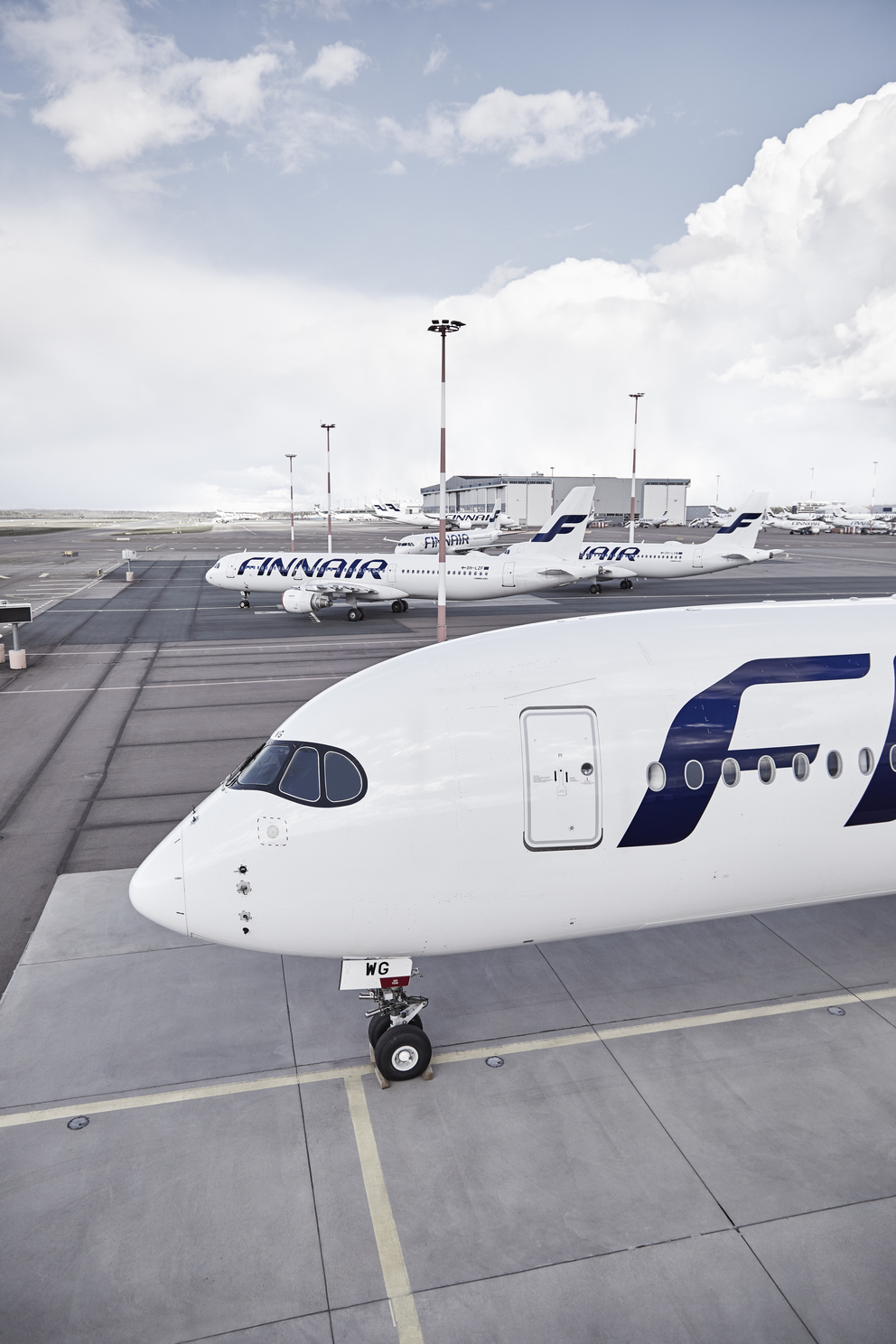
Clear Skies for Airlines – How to Avoid Turbulence During Your Cloud Journey
Airlines are a much needed part of our society and daily lives. They are a driver of economic growth, and a major global employer responsible for over 29M jobs. They enable global tourism and carry over 40% of all interregional exports of goods. Airlines are very, very important.
For all airlines, business operations - in terms of cloud computing - are in a unique position in relation to other industries and enterprises. In fact, the airline industry is quite different from any other. Here’s why.
What Makes Air Transport Such a Unique Industry?
Some of the requirements and dynamic drivers of the airline industry:
Safety and Regulation
Fleet upkeep and crew certification
Fixed & Variable Costs
Route slots
Fuel cost variability (fuel makes up approx 40% of costs)
Capital Requirements
Fleet investment and maintenance
Staff Skills
Cockpit, cabin, ground, backoffice crew
Market Volatility & Low Stickiness
Close interlock with economic trends
High customer churn
Intense customer price sensitivity
Dependance on Complex Service Ecosystem
Many external companies involved in product delivery
Clear ESG Position & Reporting
Mandatory for a growing investor and customer cohort
These combine, with other factors, to make the airline business a highly volatile one. But some of these challenges can be mitigated with the use of cloud technologies. Every facet of an airlines operations must be scalable, responsible, measurable, be able to predict future market behaviour and have the elasticity to rapidly react to that volatility.

How Cloud Delivers on these Challenges for Airlines
For an airline to be profitable, a few qualities must exist in its operations.
OpEx Scalability & Accountability
Cloud delivers spectacular cost benefits in comparison to on-prem environments. Two major factors are its scalable and accountable spend.
Scalability in the sense that the spend can reflect the service delivered, as opposed to the on-prem type of massive locked-in costs as CapEx. Cloud services can be dialed up or down depending on the business and market requirements.
Accountability is delivered as clear visibility of all IT workloads from a cost perspective, to each responsible function in the airline. So no more guesswork as to which business unit is wasting valuable IT resources and who is behaving responsibly.
And FinOps is the cloud superpower that provides this capability. It’s a mandatory function of any cloud implementation. We’ve enabled spectacular savings that airlines can enjoy going from on-prem to cloud - Finnair for example had a 40+% cost saving.
But FinOps is not a given, it must be managed carefully and with the right tools to be successful.

Finnair's 7-month data centre exit
See how with a unique cloud migration approach, Finnair achieved a complete data centre exit in just 7 months.
Environmental Awareness
Using the same cloud capabilities enabled by FinOps as mentioned above, the carbon footprint of business units, workloads and applications can be calculated and tuned to match an airline's ESG goals and feed accurate information into reporting.
FinOps has evolved to manage more than just the financial metrics of a cloud implementation. Its eco-minded sister - GreenOps - is an example of this evolution; enabling the measurement and action on sustainability of operations within an organisation.
All major public cloud providers have detailed ESG reporting on the performance of their services, making your sustainability awareness far easier to manage.
Measurable Performance
To make an improvement in any business process, accurate and timely performance measurements are needed. This can be a very difficult task when your IT estate exists primarily in an on-prem state. In contrast, it can be far easier to collect and combine for analysis when on a cloud platform.
Performance metrics related to your average turnaround time, block-time variation, passenger boarding, baggage handling, etc. can be ingested into a harmonised cloud data infrastructure. And from there they are available for the next step, analysis.
Analysis & Predictive Techniques Built-Into Operations
Operational expertise exists throughout your airline. Pretty much every function has some value to add in terms of process improvement. However, to capture this value it’s necessary to deploy the right toolset fueled with the right data.
Gate and ground operations are filled with a complex array of stakeholders and processes all carefully orchestrated in sequence, to get a flight ready for take-off.
Elasticity of Operations
Analysis and the generation of valuable insights is only worthwhile when those insights are acted upon. Rapid prototyping of the chain from ideation to modeling to testing is required to find those interventions that can really make a difference to performance.
In this respect, cloud is very fertile ground for rapid prototyping. In other industries such as banking and automotive, these qualities are embraced to great effect by some clients. The same is starting to be done by some in the airline sector.
Recent developments in AI have produced a strong demand for these capabilities to be baked-into operations by airlines. The trick is to control this flow and evolution of demand in a pipeline that delivers results - be they validations or not - quickly, to allow fast iterations and to keep the stakeholders engaged.
Elasticity of technical and human operations are the success factors.
For an airline, or indeed any major enterprise, it is important to focus on the known desired results in as much granular detail as possible. Ground operations is my favourite example.
In the case of baggage handling, the entire chain of operations has been studied in detail over the last few decades. However, it’s still a major cause of delays in aviation. The biggest reason? Lack of data sharing between stakeholders - you can read more about flight delays and the lack of data connectivity in my previous blog here.

How can cloud, data & AI reduce flight delays?
More can be done to manage data throughout the journey, and improve operations.
This sharing of data could be years away, so why wait? Some of the required data can be gathered from other systems, such as the gate cameras. Sure this video feed does not show the current state of the entire baggage handling process, but it does show a major interlocked part of the process, the underwing part.
What’s the answer?
Well, at Nordcloud for example, we’re building an AI machine vision system to give a state analysis and prediction of this environment, which feeds to gate operation comms systems.
What's the magic here? (hint, it’s not magic, it’s skill)
- Using pre-existing data/video sources
- Not being tied to difficult-to-agree data sharing
- Cheap cloud capabilities
- Capturing staff expertise
- Strong staff engagement
- Rapid results
This is only one example, but there’s a huge breadth of opportunities like this for airlines. Want to see more? Reach out using the form below, or come and meet me at the World Aviation Festival.
Are you heading to the World Aviation Festival this year?

See you there!
As a silver sponsor, we’ll be centre stage as the cloud-native partner for airlines moving into the future, closely aligned with IBM and AWS.
Join us at the IBM Innovation Lounge, or at one of our speaking slots, where we’ll share the stage with the likes of Finnair, Eurowings, EasyJet, United Airlines, and Icelendair.
If you’re thinking about disruptive technologies, data connectivity or the need to be cost-effective when driving modernisation, be sure to join us. You can find out more about these sessions here.
Get in Touch.
Let’s discuss how we can help with your cloud journey. Our experts are standing by to talk about your migration, modernisation, development and skills challenges.




